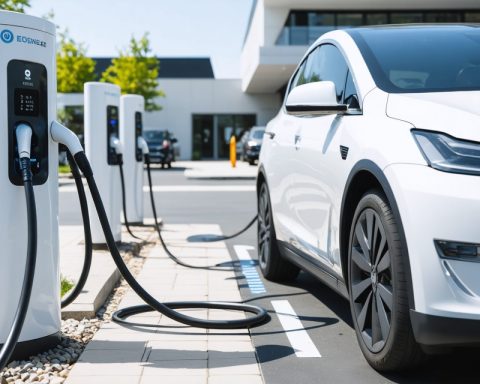BYD Dominates August Sales with Competitive Strategy
BYD’s aggressive pricing strategy catapulted the brand to the forefront of the global EV market in August, showcasing an impressive 24.2% market share. With a significant lead over its competitors, BYD’s 355,174 registrations surpassed all expectations.
Tesla’s Sales Performance Sees Fluctuations
While Tesla continued to make waves with the Cybertruck, hitting around 4,000 deliveries per month, the overall brand sales faced fluctuations. Recording 152,140 sales globally and claiming a 10.4% market share, Tesla found itself in second place for the month of August.
Wuling and Li Auto Show Promise
Wuling secured the third spot in August, benefiting from the success of its Mini EV and Bingo models. Meanwhile, Li Auto crept up on the competition, indicating a close race for third place as the year progresses.
Geely and Leapmotor Make Moves
Geely landed in fifth place with solid sales figures, driven by models like the Galaxy E5 and Panda Mini. On the other hand, Leapmotor clinched the tenth position, proving the prowess of Chinese brands in the industry.
Market Dynamics and Future Trends
As the global EV market continues to evolve, price cuts and new model launches are reshaping the competitive landscape. With BYD leading the charge and Tesla facing challenges, the industry is set for a period of exciting transformations and fierce competition.
Exploring Emerging Trends in the Global EV Market
Amidst the shifting leadership in the global EV market, certain key players are making significant strides that warrant attention. The emergence of NIO, a Chinese electric vehicle manufacturer, stands out as a notable highlight. Despite not being among the top contenders in August, NIO has been gaining momentum with its innovative technology and growing customer base.
What role does government policy play in the EV market?
Government policies and regulations play a crucial role in shaping the dynamics of the EV market. Incentives such as tax credits, subsidies, and infrastructure investments can heavily influence consumer adoption rates and industry growth. Understanding how different governments approach EV incentives is essential for predicting market trends.
Challenges and Controversies:
One of the key challenges facing the global EV market is the issue of charging infrastructure. The availability of charging stations, especially fast chargers, remains a significant barrier to widespread EV adoption. Additionally, concerns about the environmental impact of battery production and disposal continue to spark debates within the industry.
Advantages and Disadvantages:
The advantages of the growing global EV market include reduced greenhouse gas emissions, lower operational costs for drivers, and the potential for energy independence. However, challenges such as range anxiety, high upfront costs of EVs, and dependence on rare earth materials for batteries present notable disadvantages.
Exploring the Role of Battery Technology:
The development of advanced battery technology is a critical factor driving the evolution of the EV market. Companies investing in next-generation battery technologies, such as solid-state batteries or fast-charging solutions, are poised to revolutionize the industry. Understanding how battery advancements impact market competitiveness is vital for stakeholders.
Further Insights and Resources:
For more information on the latest trends and developments in the global EV market, visit Clean Technica. Stay updated on industry news and analysis to gain a comprehensive understanding of the evolving landscape.
In conclusion, the global EV market is experiencing a transformative phase characterized by intense competition, technological innovation, and shifting market leadership. By staying informed about emerging trends, key challenges, and opportunities, industry players can navigate this dynamic environment effectively.








